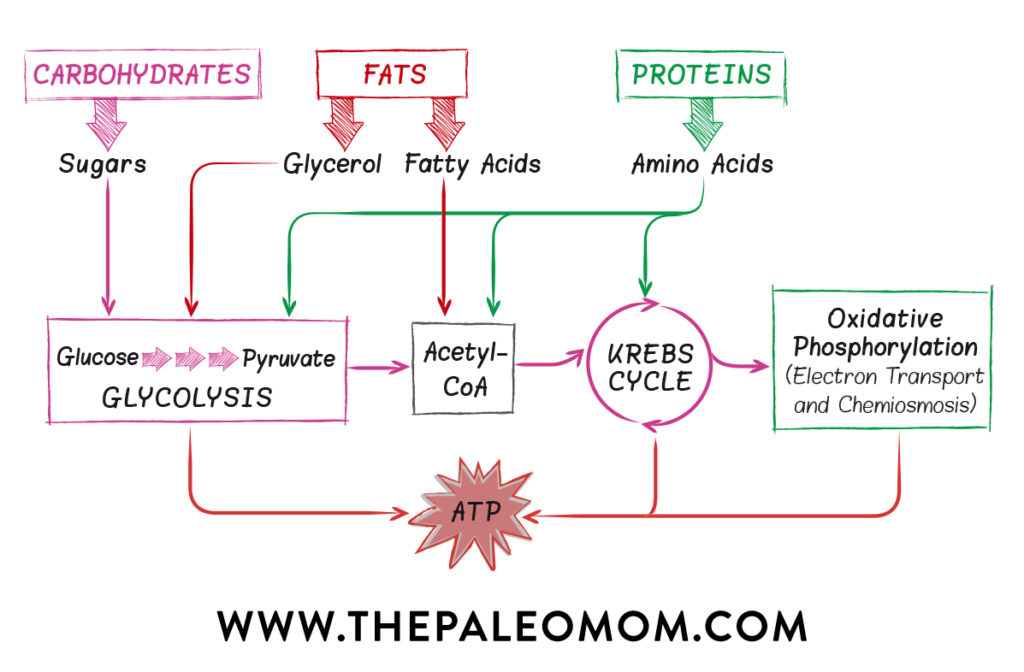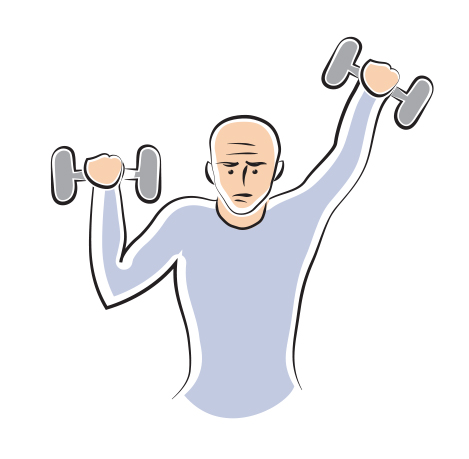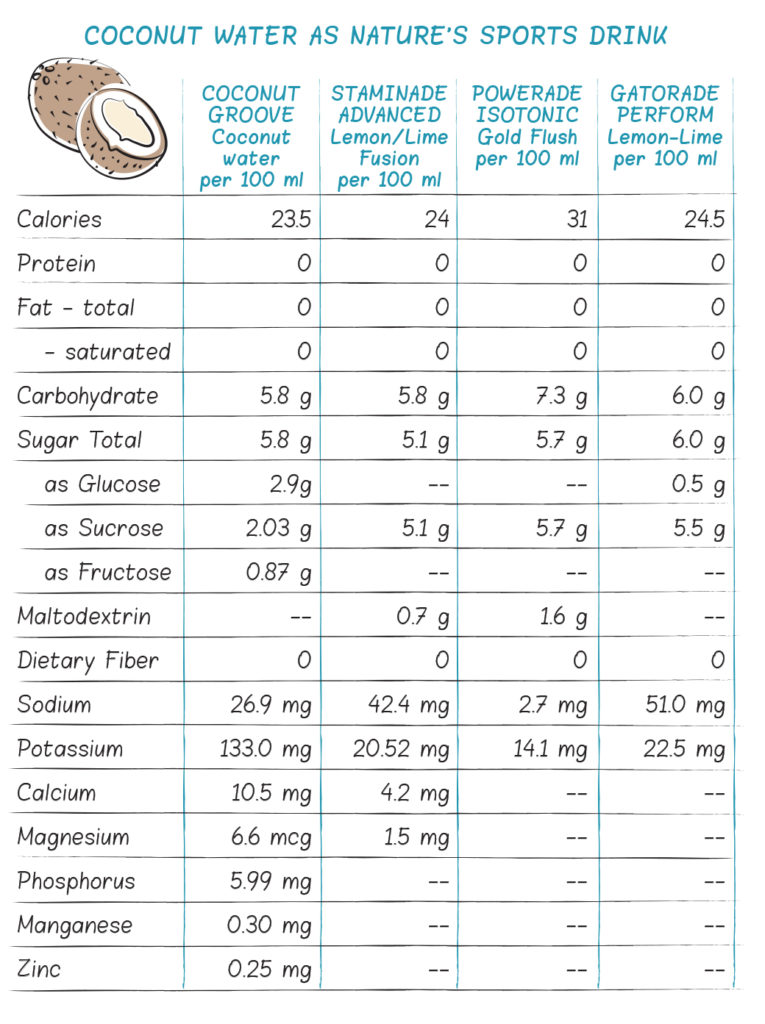Can the Paleo diet work for athletes? This is a common question among fitness enthusiasts, and the answer is a resounding yes! The sports and fitness industry tends to be flooded with foods that are heavily processed, low in micronutrients, and high in ingredients that disturb gut health—for example, artificially sweetened protein powders, meal replacement bars, carbohydrate gels, and energy drinks. Although many of these products can boost performance and recovery in the short-term, those benefits may come at the expense of longer-term health, especially if these processed foods start forming the bulk of the diet. Fortunately, Paleo supplies all the raw materials needed to support performance and help the body recover from physically demanding activities while also improving micronutrient status and removing dietary components that can undermine health over time. This can benefit virtually anyone interested in performance, from amateur CrossFitters to professional athletes! In fact, maintaining an active lifestyle is a pillar of health for everyone! See The Importance of Exercise and The Benefits of Gentle Movement.
Table of Contents[Hide][Show]
Supporting performance really amounts to supporting metabolism and muscular health.
Metabolism
The term metabolism refers to the collection of life-sustaining chemical transformations within the cells of an organism. This includes both the conversion of food compounds into building blocks for cellular structures and extracellular matrix and the conversion of food into energy to run cellular processes, however, when we refer to metabolism colloquially, we generally think simply about burning calories and that’s what I’m going to focus on here.
Adenosine triphosphate (ATP) is the energy currency for all cells. It’s produced in a series of chemical reactions, collectively referred to as cellular respiration (since the process uses oxygen and produces carbon dioxide), from carbohydrates, fats and proteins that we consume, or in the absence of sufficient fuel from food, that are stored in our body.
Glucose is the preferred fuel for our cells because many ATP molecules can be formed from a single glucose molecule (see also Why Is Sugar Bad?). Glucose molecules are first converted into pyruvate via glycolysis which yields some ATP. Pyruvate then enters the mitochondria where it is oxidized into acetyl-CoA, which can also yield some ATP. Acetyl-CoA is then converted into more ATP in what is called the Krebs or citric acid cycle, an 8-step process involving 18 different enzymes and co-enzymes. Other high-energy products of the Krebs cycle (NADH and FADH2) are converted into yet more ATP in the last step of cellular respiration, oxidative phosphorylation in the electron transport chain. This is complex biochemistry; the important part here is that there’s a whole lot of chemical reactions required to make sugar into a useable energy source for our cells!

Glucose isn’t the only molecule that can be converted into ATP via cellular respiration. Protein (amino acids), fats (fatty acids and glycerol), and other carbohydrates (like fructose) can be converted to various intermediates of glycolysis, pyruvate oxidation and the Krebs cycle, allowing them to slip into the cellular respiration pathway at multiple points. However, glucose is the easiest to convert into ATP (it requires the least amount of oxygen and can even produce some ATP anaerobically) so it is the preferred fuel for cells. In between meals, once the glucose that enters the bloodstream has been used up, cells metabolize stored fat and glycogen (stored carbohydrates) for energy. A flexible metabolism is one that can easily switch between carbohydrates and fats, depending on what’s available. Although protein is not a preferred source of energy, it can be used if needed—this is why people lose muscle mass in addition to fat stores when they are too severely calorically restricted, fasting, or starving.
Supporting metabolism includes consuming sufficient carbohydrates (see How many carbs should you eat?), consuming nutrients required for metabolism of stored energy (see 10 Nutrients that Can Help You Burn Fat), supporting thyroid health (see The Case for More Carbs: Insulin’s Non-Metabolic Roles in the Human Body and What about the Goitrogens in Cruciferous Veggies?) and maintaining insulin sensitivity (see The Paleo Diet for Diabetes, 3 Ways to Regulate Insulin that Have Nothing to Do With Food, Why Is Sugar Bad?, The Hormones of Hunger, and The Hormones of Fat: Leptin and Insulin). In every respect, the Paleo diet supports metabolism through it’s focus on consuming tons of veggies (see The Importance of Vegetables ) including those high in slow-burning carbohydrates like plantains and root vegetables (see What is a “Safe Starch”?), nutrient sufficiency (meaning we get all of the micronutrients we need from food, see The Importance of Nutrient Density ), and lifestyle factors that support endocrine systems health.
Muscle Health
 Muscle is a type of fibrous tissue with the ability to contract, resulting in movement. The human body contains more than 600 muscles, with functions as diverse as pumping blood to peristalsis of the digestive tract to moving our eyeballs to helping us lift heavy objects. Those many muscles fall into three basic categories:
Muscle is a type of fibrous tissue with the ability to contract, resulting in movement. The human body contains more than 600 muscles, with functions as diverse as pumping blood to peristalsis of the digestive tract to moving our eyeballs to helping us lift heavy objects. Those many muscles fall into three basic categories:
- Smooth muscles, which contract involuntarily (without our conscious control) and are found in organs and structures like the stomach, esophagus, intestines, uterus, bladder, and blood vessels
- Cardiac muscle (the heart)
- Skeletal muscles, which we contract voluntarily to move our bodies and which stretch across joints and attach to bone (held in place with the help of tendons)
Nutrivore Weekly Serving Matrix
An easy-to-use and flexible weekly checklist
to help you maximize nutrient-density.
The Weekly Serving Matrix is very helpful! I’ve been eating along these lines but this really helps me know where to focus vs. which foods serve a more secondary role. It’s super helpful and has taken a lot of worry out of my meal planning. Thanks!
Jan
Skeletal muscle is further divided into three main types:
- Type I, or slow-twitch oxidative, which can carry more oxygen and is used for sustaining aerobic activity requiring low force and power production. (Think walking and maintaining posture, but these are also the primary fiber type found in endurance athletes.)
- Type IIA, or fast-twitch oxidative, which are used for sustained activates that require high power, force and/or speed, like most sports. They are more resistant to fatigue than Type IIB.
- Type IIB, or fast-twitch glycolytic, which contract powerfully and quickly, but get fatigued more easily—making them mostly used for short bursts of anaerobic activity (such as lifting heavy weights or sprinting).
Some forms of type II muscle fibers activate with progressively heavier loads and allow us to build greater muscle mass.
All forms of muscle are extremely important, and muscular and neuromuscular diseases (such as Parkinson’s) can have devastating physical effects. Along with helping us move our bodies and keeping our organs functioning, muscle may help protect against insulin resistance and diabetes, especially in the form of higher skeletal muscle mass. One study found that with every 10 percent increase in the ratio between a person’s skeletal muscle mass and total body weight, the risk of insulin resistance dropped by 11 percent and the risk of prediabetes or type 2 diabetes dropped by 12 percent. While resistance exercise itself helps lower blood sugar levels and improve insulin sensitivity (skeletal muscle takes up glucose when contracting), skeletal muscle serves as a storage tank for glycogen even when we’re at rest. The more muscle we have, the more glucose we can store (versus letting it circulate in our blood or converting it into fat via lipogenesis).
Protein is the most important macronutrient when it comes to maintaining and building muscle, and it’s part of the rationale for the Paleo diet’s emphasis on a higher proportion of protein than the Standard American Diet (along with the other beneficial roles of protein, such as regulating appetite and increasing satiety). In fact, protein requirements may increase for some athletes, especially those involved in muscle-building activities. Eating 20 to 30% of calories from protein is standard for the Paleo diet, supplying ample protein even for the most ardent athletes. See The Diet We’re Meant to Eat, Part 3: How Much Meat versus Veggies?, Carbs Vs. Protein Vs. Fat: Insight from Hunter-Gatherers, Plant-Based Protein: What is its Role in the Paleo Diet?, The Importance of Fish in Our Diets, Grass-Fed Beef: A Superfood worth the Premium Price and Why Everyone Should Be Eating Organ Meat
Certain micronutrients are also critical for muscle health. The electrolytes calcium (found in leafy greens, small bone-in fish like sardines, and dairy), magnesium (found in dark green leafy vegetables, nuts, seeds, fish, avocados, and bananas), potassium (found in tomatoes, sweet potatoes, bananas, coconut water, spinach, acorn squash, and avocados), and sodium (found naturally in foods like celery and beets and in any salted food) are involved in muscle contraction. (Aside: Ever get leg or foot cramps in the middle of the night? These cramps are often caused by electrolyte imbalances or deficiencies. When our bodies are too low in sodium, potassium, magnesium, or calcium, our muscles can’t properly contract and release. In particular, an imbalanced ratio of potassium (which opens or relaxes muscle) to sodium (which closes or constricts muscle) can lead to uncomfortable cramping while we’re trying to fall asleep or when we’re exercising (in which case electrolyte imbalance can be exacerbated by sweating and dehydration). Low levels of magnesium, which also facilitate muscle relaxation, are another common culprit in muscle cramps.) Vitamin D helps the body absorb calcium, thus it also plays a role in maintaining muscle health. Zinc (found in organ meat, muscle meat, pumpkin seeds, and shellfish) is key for helping our bodies utilize the protein we eat and facilitating muscle growth. Iron (rich in red meat, shellfish, and some leafy greens) is essential for the production of red blood cells, which carry oxygenated blood around the body, including to the muscles.
Consuming adequate carbohydrate also is important for fueling muscles during workouts and replenishing muscle glycogen after exercise, so Paleo carbohydrate sources like tubers and fruit should be emphasized (see How many carbs should you eat? and Why Fruit is a Good Source of Carbohydrates). Another key for performance is maintaining insulin sensitivity. This goes both ways: activity helps restore and maintain insulin sensitivity (see 3 Ways to Regulate Insulin that Have Nothing to Do With Food) and insulin signaling is necessary for transporting amino acids into muscle and stimulating muscle protein synthesis (see The Case for More Carbs: Insulin’s Non-Metabolic Roles in the Human Body). Studies also show that high antioxidant phytochemical consumption can benefit muscle recovery post exercise, another great reason for the Paleo diet’s focus on eating tons of vegetables and fruit, see The Importance of Vegetables, The Amazing World of Plant Phytochemicals: Why a diet rich in veggies is so important!, and Polyphenols: Magic Bullet or Health Hype?.
Electrolytes and Performance
A performance-supporting version of Paleo includes an emphasis on nutrients necessary for muscle growth and contraction—particularly protein, but also the electrolytes calcium (found in leafy greens and small bone-in fish like sardines), magnesium (rich in many plant foods, like dark green leafy vegetables, avocados, bananas, nuts, and seeds, as well as some animal foods, like fish), potassium (abundant in tomatoes, bananas, sweet potatoes, squash, avocados, and coconut water), and sodium (found in any salted food, as well as in shellfish, beets, celery, and some other vegetables). These electrolytes are vital for controlling contraction and relaxation in all muscles, including both skeletal muscles and the heart.
The role that electrolytes play in performance is the reason why the sports drinks market has exploded in recent decades. Unfortunately, commercially-available sports drinks are full of food dyes, artificial flavors, high-fructose corn syrup, and artificial sweeteners, while simultaneously lacking synergistic and trace minerals that can also support performance (like manganese).
In lieu of electrolyte replacement drinks, coconut water delivers significant levels of electrolytes, as well as other micronutrients.
Paleo for Performance
Combined with adequate sleep (critical for tissue repair) and an exercise routine that avoids overtraining and incorporates adequate recovery time, Paleo foods can easily support performance in nearly any sport.
Citations
Buonocore D, Negro M, Arcelli E, Marzatico F. Anti-inflammatory Dietary Interventions and Supplements to Improve Performance during Athletic Training. J Am Coll Nutr. 2015;34 Suppl 1:62-7. doi: 10.1080/07315724.2015.1080548.
Casazza GA, Tovar AP, Richardson CE, Cortez AN, Davis BA. Energy Availability, Macronutrient Intake, and Nutritional Supplementation for Improving Exercise Performance in Endurance Athletes. Curr Sports Med Rep. 2018 Jun;17(6):215-223. doi: 10.1249/JSR.0000000000000494.
Girgis CM, Clifton-Bligh RJ, Turner N, Lau SL, Gunton JE. Effects of vitamin D in skeletal muscle: falls, strength, athletic performance and insulin sensitivity. Clin Endocrinol (Oxf). 2014 Feb;80(2):169-81. doi: 10.1111/cen.12368.
Hutson SM, Sweatt AJ, Lanoue KF. Branched-chain [corrected] amino acid metabolism: implications for establishing safe intakes. J Nutr. 2005;135(6 Suppl):1557S-1564S.
Ismail I, Singh R, Sirisinghe RG. Rehydration with sodium-enriched coconut water after exercise-induced dehydration. Southeast Asian J Trop Med Public Health. 2007 Jul;38(4):769-85.
Jinno N, Nagata M, Takahashi T. Marginal zinc deficiency negatively affects recovery from muscle injury in mice. Biol Trace Elem Res. 2014 Apr;158(1):65-72. doi: 10.1007/s12011-014-9901-2. Epub 2014 Feb 4.
Kim Y, Men SS, Liang C, Receno CN, Brutsaert TD, Korol DL, Heffernan KS, DeRuisseau KC. Effects of long-term exposures to low iron and branched-chain amino acid containing diets on aging skeletal muscle of Fisher 344 × Brown Norway rats. Appl Physiol Nutr Metab. 2018 Feb;43(2):165-173. doi: 10.1139/apnm-2017-0272. Epub 2017 Oct 12.
Pasiakos SM, Lieberman HR, McLellan TM. Effects of protein supplements on muscle damage, soreness and recovery of muscle function and physical performance: a systematic review. Sports Med. 2014 May;44(5):655-70. doi: 10.1007/s40279-013-0137-7.
Pereira Panza VS, Diefenthaeler F, da Silva EL. Benefits of dietary phytochemical supplementation on eccentric exercise-induced muscle damage: Is including antioxidants enough? Nutrition. 2015 Sep;31(9):1072-82. doi: 10.1016/j.nut.2015.02.014. Epub 2015 Mar 17.
Saat M, Singh R, Sirisinghe RG, Nawawi M. Rehydration after exercise with fresh young coconut water, carbohydrate-electrolyte beverage and plain water. J Physiol Anthropol Appl Human Sci. 2002 Mar;21(2):93-104.
Sousa M, Teixeira VH, Soares J. Dietary strategies to recover from exercise-induced muscle damage. Int J Food Sci Nutr. 2014 Mar;65(2):151-63. doi: 10.3109/09637486.2013.849662. Epub 2013 Nov 4.
Zoorob R, Parrish ME, O’Hara H, Kalliny M. Sports nutrition needs: before, during, and after exercise. Prim Care. 2013 Jun;40(2):475-86. doi: 10.1016/j.pop.2013.02.013. Epub 2013 Mar 21.











